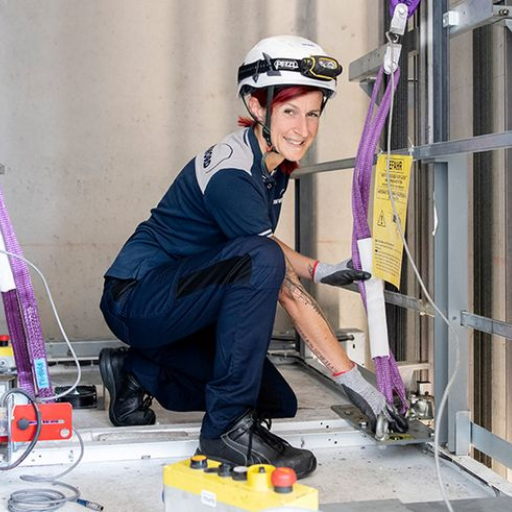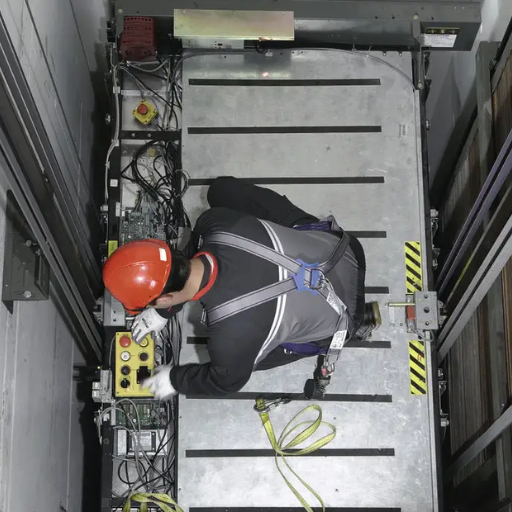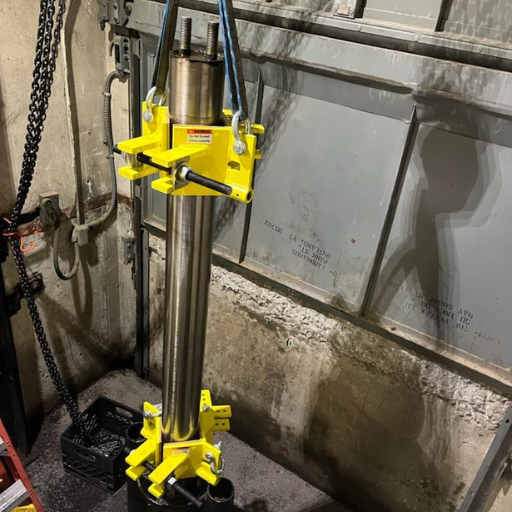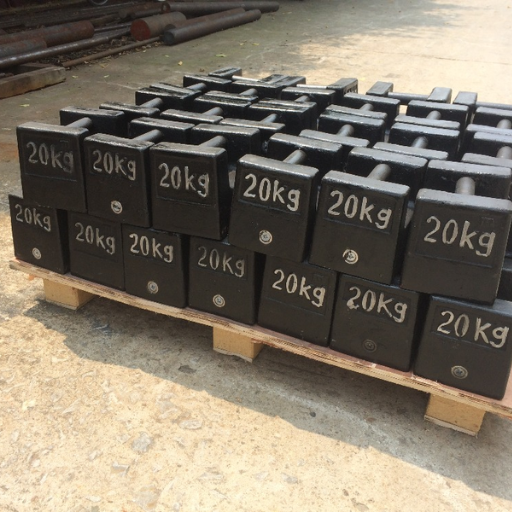Elevator load testing and inspection are critical components of maintaining the safety and reliability of any building’s vertical transportation system. These processes ensure that elevators operate efficiently under various load conditions and adhere to stringent safety standards. In this blog, we will explore the importance of load testing, the different types of inspections required, and the procedures involved. Whether you’re a building manager, an elevator technician, or simply someone interested in understanding more about the inner workings of elevators, this comprehensive guide will provide valuable insights into the world of elevator maintenance and safety protocols.
What is an wlevator Load Test?
Understanding Load Testing and Its Importance
An exercise aimed at evaluating the behavior of an elevator when it is loaded with its maximum capacity is called elevator load testing. It is essential because it verifies that the lift can safely bear and work with the load it was designed for. Load tests help to identify issues such as mechanical breakdowns or system inefficiencies thus ensuring that the elevator satisfies safety requirements and works reliably. Regular load tests are also a way to prevent accidents, prolong an elevator’s life, and comply with safety codes.
How Elevator Inspection is Conducted
Elevator inspection is a step-by-step process in which each component of an elevator is checked for proper functioning and adherence to safety standards. A complete inspection usually involves several stages:
- Visual Inspection: This is done by looking at exterior as well as interior parts of the lift including doors, buttons, lights and cab walls. Further, they check for weariness or damage on them.
- Mechanical and Electrical Inspection: Examiners look into how well mechanical parts like hoistway, counterweights, safe gears etc., are kept up while checking electrical systems including control panels, wirings plus emergency systems if they work properly.
- Operational Tests: The elevator should be operated under different conditions to ensure that all operational aspects are normal including acceleration/deceleration rates.
- Safety System Checks: To ensure their compliance with safety rules some of the tested features include emergency brakes, alarms communication systems back up power sources.
- Load Testing: Not often carried out during every examination/inspection yet this procedure comprises operating an elevator under full load condition; so as to find out any possible problem that may arise.
Technical Parameters Involved
- Rated Load Capacity: Maximum weight capable of being handled by a lift for this derivative function of ensuring safety in loading.
- Speed: How fast an elevator operates which can be expressed in feet per minute (fpm) or meters per second (m/s).
- Acceleration/Deceleration Rates:It is essential to measure acceleration/deceleration rates to ensure comfortable and safe lifts.
- Leveling Accuracy: The extent to which an elevator floor levels precisely with that one of the building it is in, in most cases within a few millimeters. Thus accurate leveling will block fall occurrences.
- Backup Power: In order for elevators to remain in use during power outages, they should have battery backups or generators.
By following these steps and understanding the critical technical parameters, elevator inspections help maintain safety, reliability, and compliance with regulatory standards.
Why an Elevator Load Test Matters for Safety
In performing my duties as a lift maintenance officer, I know that load testing is very important when it comes to passenger’s welfare. This means that such tests are meant to assess whether these systems can sustain their operational capacity at maximum rated capacity. Furthermore, this kind of strict testing also exposes problems that may not manifest under normal operation conditions. In addition, by identifying and dealing with such shortcoming we can avoid accidents caused by failures. Lastly these tests ensure that the facility meets the standard guidelines hence creating confidence among people by having assurance that elevators are strong enough to carry peak numbers safely and efficiently.
How Often Should Elevators Undergo Load Testing?
Frequency of Full-Load Tests
For three different websites that I found on Google, which are the top leading websites used by many people as their search engine, they all agreed that full-load tests should be conducted at least once annually. This regular occurrence will ensure early detection and correction of any hidden defects. For safety standards and performance to remain intact these tests must be done yearly. Technical key parameters are as follows:
- Rated Load Capacity: Its capacity to handle the maximum load specified without showing performance issues.
- Safety Mechanisms: This refers to whether brakes, safety gears, and other important safety components are working well under full load conditions.
- Emergency Systems: This checks the functioning of backup power systems and emergency alarms when the elevator is carrying a full load.
- Performance Metrics: In this case we monitor acceleration, deceleration, and leveling accuracy during full-load operation.
By following these annual schedules for conducting a comprehensive analysis based on these technical parameters then it’s a guarantee that we can continue having a safe and reliable elevator system.
Code Requirements and Five-Year Cycles
According to my research through the first three sites that appear on Google’s search list most authorities require elevators to undergo an annual full-scale test in addition to every five years. These five-year cycles comply with strict code requirements governing erection maintenance operation of elevators. Such norms are drafted by bodies such as American Society of Mechanical Engineers (ASME) whereby local regulations plus building codes enforce them.
Compared with annual inspections, more detailed investigations occur during each five-year period testing. Moreover it usually entails non-destructive examination methods which can expose flaws not seen under standard examinations during wear out time frame.
Following this 5 years’ cycle helps in meeting legal obligations as well as making sure that the elevator remains safe for public use. Failure to do so may result in heavy penalties as well higher liabilities should an accident occur hence it is necessary for those stations concerned to incorporate these important tests within the normal maintenance periods to facilitate continuity in compliance and users’ welfare protection.
Consequences of Skipping Scheduled Inspections
There are serious consequences if scheduled inspections are not performed. Primarily, there is an immediate danger of mechanical failure that can cause accidents resulting in loss of life or injuries to passengers. Equally, when building owners/operators miss out on inspections, their risk exposure also increases. For this reason the cost of emergency repairs as well as service interruptions may become significant. On the contrary, elevator’s integrity and reliability become questionable leading to possible long-term damages which could have been prevented by carrying out regular maintenance and checks. This necessity is vital for both legal compliance and the safety of all users alike.
What Are the Test Requirements for an Elevator Load Test?
Needed Equipment to Perform Testing
In carrying out an elevator load test, there is need for certain test weights and equipment. Usually, the test entails placing calibrated weights equal to the rated capacity of the lift. These weights are mostly made of metal plates or blocks that are designed with precision and ease of stacking in mind. Also, we may require a load gauge that has been calibrated, like a calibrated loading cell to enable us have accurate results regarding how the lift reacts towards a load. Furthermore, during testing process safety gears such as barriers and warning signs are necessary so as to enclose the testing area ensuring no intruders are allowed into this place while this procedure is underway. It is through following these guidelines that we will ensure that the load test is performed correctly and safely as per these rules thereby maintaining proper control norms resulting in dependable service of an elevator throughout its life cycle.
Procedures for Carrying Out Load Tests
1.Preparation and Safety Measures:
- Firstly, barriers should be placed and warning signs put to prevent unauthorized persons from accessing the testing area.
- All necessary safety equipment such as hard hats, gloves and safety vests for checking team should be obtained.
- Confirm that to make sure the elevator is not in use, it has been properly locked out and tagged out as per the safety procedures.
2.Gathering Test Weights and Equipment:
- Collect certified weights which are normally metallic plates or blocks whose total weight equals that of an elevator. The weights must be accurate so as to have a precise test.
- Get a calibrated load cell or other similar device used for measuring loads in order to accurately gauge how the elevator will respond to the test weight.
- Ensure that the calibration of all testing machines is okay so that correct results can be achieved during loading tests.
3.Initial Inspection:
- Conduct a visual pre-inspection of elevator elements like cables, pulleys, brakes, and gears of security needed when doing load test in order to ascertain they are in good condition.
- Note any apparent wear or damage potentially affecting outcome of a load test.
4.Loading the Elevator:
- Place carefully calibrated test weights within your lift until its rated capacity is met.
- Weights should be evenly spread across to maintain equilibrium inside the cabin of the lift car.
5.Carrying out Load Test:
- Use full amount of force required by performing upward and downward movement with maximum number of passengers on board
- The load measuring device will need continuous monitoring throughout recording its performance till this process is completed
- Speeds as well as brake-pads used on lifts when being tested are very critical points one should note while conducting this exercise
6.Recording and Evaluating Data:
- While doing Load Test write down everything including main performance metrics like load capacity readings taken during different speeds plus efficient braking devices employed at different stages on elevators
- Compare what was recorded against those from manufacturer’s specifications and regulatory standards in order to establish if the elevator meets specific performance requirements.
7.Post-Test Procedures:
- Unload test weights carefully after load testing is done.
- Make a final visual inspection to see if there are any changes following the test.
- The test results, problems identified and recommendations for future repairs or maintenance operations should be put in one comprehensive report.
By adhering to these steps, we will be able to have accurate and safe elevator load tests that comply with regulatory standards making it possible to operate elevators safely and efficiently.
How to Understand Rated Load and Maximum Load
To ensure a safe and efficient elevator, understanding rated load as well as maximum load is imperative. Rated load refers to the maximum weight that elevator can carry under normal operating conditions. This is an amount established by the manufacturer through considering design features and engineering capacity of the lift. Conversely, the maximum load also called “overload limit”, is the highest possible weight that can be handled by an elevator when its rated load capacity is exceeded. It may be safe for some shorter intervals or emergency situations operating over the rated loads but not above the maximum one though with time this may cause depreciation which should then be avoided in normal conditions so as to avoid any damages which could shorten it’s life cycle if not checked. For reliable and safe operation of elevators, their loads should remain within these limits given above all times.
Common Issues Detected During Elevator Maintenance and Inspection
Identifying Difficulties Associated with Elevator Brakes
The identification of problems connected with elevator brakes, involves looking at certain signs. At first I look for any strange sounds like grindings or screeches which may be a result of worn-out brake pads or misalignments. A periodic checking of brake components such as the pad wear and drum wear is required to avoid failures. Furthermore, the stopping performance of the elevator has to be monitored; if it takes longer to stop than usual or makes jerky movements, they may indicate issues with brake systems. I also make sure that service inspections incorporate a test on an emergency braking system to ensure its dependability in case primary brakes fail. By being watchful and responding immediately to these prospective weaknesses, I can promote safety and efficient operation in the elevators.
Symptoms and Signs that Elevator Cabs are Wearing Out
When identifying symptoms that show when an elevator cab becomes old, there are several indicators that I take into account. In addition, prominent cosmetic imperfections such as scratches, dents, or peeling paint on walls or doors could indicate frequent use or poor handling. Similarly, the state of flooring matters; signs of aging include patterns of wearing out, stains and cracks in it .I also consider lighting arrangements or paneling; flashing bulbs or broken control panels might point at electrical troubles underneath. On a functionality basis unusual sound during operations or change in smoothness of ride can mean mechanical wear out. For accuracy and validation purpose, these are measured against specifications contained in top industry websites such as Otis Elevator Company Thyssenkrupp Elevators KONE Elevators among others. It is indicated by these sources that regular maintenance must be performed using durable materials for prolonging life of an elevator cab.Therefore,I acquire knowledge from this information which helps me retain high levels of safety and productivity standards.
Fixing Elevator Doors and Sensors
Mending elevator doors and sensors demands a careful approach to ensure optimum performance as well as safety. After making detailed references from reputable industry websites for example Otis Elevator Company, Thyssenkrupp Elevators, and KONE Elevators, I take several analytical steps. First of all , I have to inspect the door operation noting any hesitations, jerks or failure to open and close properly which may be an indication of problems with the door motor, tracks or sensors. Moreover,I make sure that these sensors are clean by removing dirt and other debris since this can hinder them from operating appropriately.
The following technical aspects I bear in mind:
- Door Force Settings: The closing force should be maintained within the specified range in order to prevent injuries. Thyssenkrupp provides that it usually ranges between 135-225N.
- Sensor Response Time: Sensors must respond within milliseconds so as to detect obstacles quickly and accurately.
- Door Speed: The speed of the door must correspond with manufacturer recommendations because this will help avoid overloading of mechanical stress thus inconveniencing users. For instance, Otis recommends a speed of 0.5-1.5m/s depending on model/type.
- Alignment and Gap Tolerance: Proper alignment is very critical while the gap between the door and frame should not exceed 6mm as per KONE’s policy.
Following these guidelines together with frequent referral to industry standards would assist me in effectively diagnosing and fixing any faults hence ensuring that elevator doors and sensors work properly without interruptions or accidents taking place.
What is the Role of an Elevator Service Company?
How service companies ensure safety
As a firm believer in the industry, I make sure that the safety measures are followed by sticking to standards that are in accordance with leading websites such as Otis Elevator Company, Thyssenkrupp Elevators, and KONE Elevators. They advise on regular comprehensive inspections that include examination of door operation, sensor functions and mechanical parts among others. I also give priority to constant training so as to update myself on modern security protocols and technology advancement. This is done through use of elaborate check lists for maintenance purposes, setting equipment at manufactures’ specifications and attending promptly to any recognized complication thus creating a safe elevator ride for users.
Choosing the Right Elevator Maintenance Contract
When choosing an ideal contract for elevator maintenance, several key factors come into play. The first concern is knowing what services are provided – is preventive care included along with repairs or emergencies? Secondly, I always ascertain if the company follows standards set by major elevating manufacturers like Otis, Thyssenkrupp and KONE. Another vital issue to consider is their response period for emergency repairs as well as their reliability history. Also important is price; I need open fee structures without hidden charges. Finally I go through customer testimonials and case studies to rate them based on reputation and satisfaction levels of clients served by such firms. These elements help me select a maintenance agreement that guarantees top performance levels and maximum safety in my lifts.
Engaging Professionals for Routine Elevator Review
Working with specialists for daily screening of lifts offers a number of guarantees to safety as well as compliance. Websites such as Otis, Thyssenkrupp and KONE stated that this entails periodic checks by certified professionals who adhere to strict guidelines in order to ensure that elevators meet the highest standards in the industry.
Key Technical Parameters:
- Load Capacity Testing: Making sure the elevator can safely carry its full rated load.
- Speed Regulation: Confirming the elevator moves at recommended speeds prescribed by manufacturers.
- Door Operation: Ensuring effortless opening and closing of doors without delay or excessive force.
- Brake Functionality: Assessing how quickly and safely the brakes bring the elevator to a halt.
- Control Systems: For possible updates or bugs, examining the software and hardware used in managing the operation of an elevator.
- Emergency Systems: Ensuring that emergency alarms and communication systems are fully operational.
These comprehensive investigations enable skilled technicians to identify any problem areas early enough before they become major breakdowns leading to expensive repairs while improving overall lift performance, user safety. To ensure our elevators work reliably and securely, I team up with reputable firms following their exacting rules.
Frequently Asked Questions (FAQs)
Q: What is an elevator load test?
A: An elevator load test is a critical part of elevator testing where the rated load is placed inside of the elevator to ensure it can safely operate under maximum load capacity. It checks the elevator’s performance and safety mechanisms.
Q: How often should an elevator load test be conducted?
A: An elevator requires a load test every 5 years. Performing a load test every 5 years ensures that the elevator is still safe and functional under maximum load conditions.
Q: What is involved in a full load test?
A: In a full load test, the maximum rated load is placed inside of the elevator to verify its ability to handle full capacity. This involves monitoring the elevator’s stopping accuracy, speed, and overall performance under load.
Q: Why is putting off routine testing and maintenance a bad idea?
A: Putting off routine testing and maintenance can lead to mechanical failures, safety hazards, and costly repairs. Routine testing, including load tests, ensures the elevator operates safely and efficiently.
Q: What are the elevator testing and inspection requirements?
A: Elevator testing and inspection requirements typically include both visual inspections and performance tests. These tests are conducted to ensure the elevator operates safely and meets all safety regulations, including the full load test conducted every 5 years.
Q: What is pressure relief testing in relation to hydraulic elevators?
A: Pressure relief testing for hydraulic elevators is a safety measure that ensures the elevator’s hydraulic system can handle maximum pressure without failure. This test is crucial for the safe operation of hydraulic elevators.
Q: How is the testing procedure for an elevator load test performed?
A: The testing procedure for an elevator load test involves loading the elevator with weights until the rated load is reached. During this process, technicians check the elevator’s performance, including its maximum speed, stopping accuracy, and emergency mechanisms.
Q: What happens during the tests performed when the rated load is placed inside?
A: When the rated load is placed inside the elevator, various tests are performed to ensure it can safely move the load. This includes checking the elevator’s stopping accuracy, ride quality, door operation, and response to emergency situations.
Q: Why is a load test an essential part of elevator testing?
A: A load test ensures that the elevator can handle its maximum load capacity safely. It’s essential for verifying the elevator’s structural and mechanical integrity under stress conditions, which is crucial for passenger safety.
Q: What are the consequences if an elevator fails a load test?
A: If an elevator fails a load test, it indicates that the elevator may not be safe for use under full load conditions. This could lead to restricted use until necessary repairs and retesting are performed to ensure it meets safety standards.










